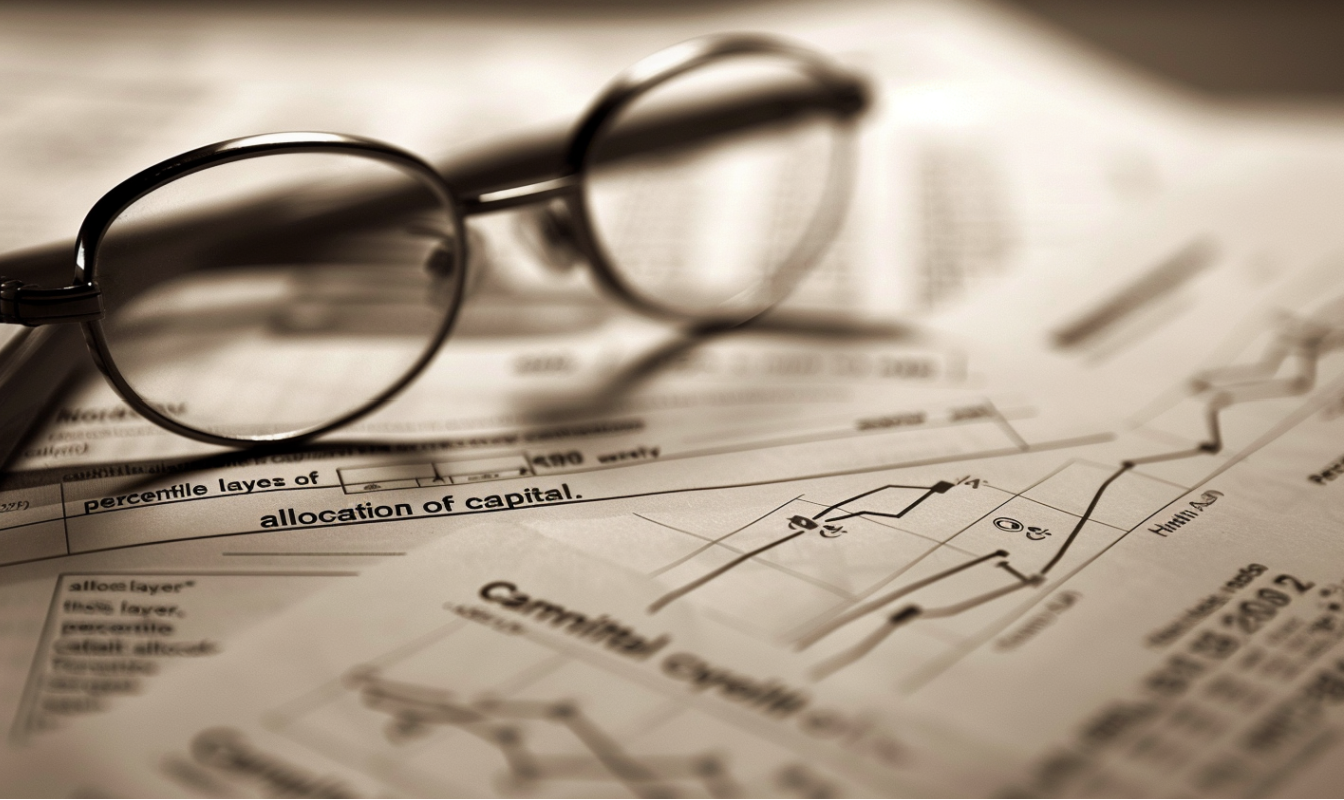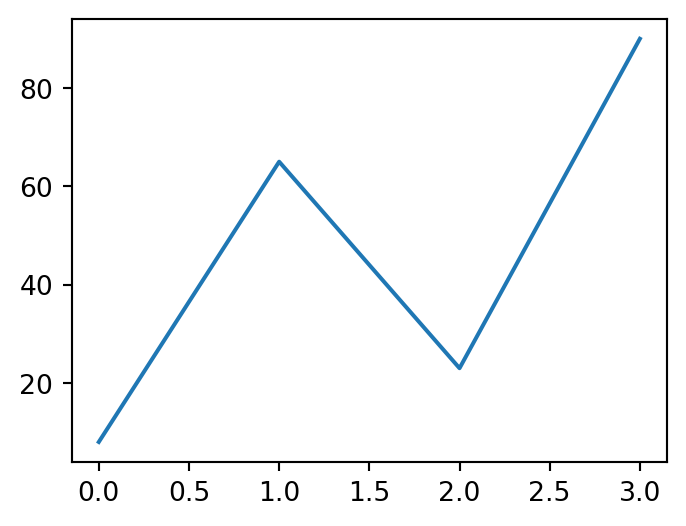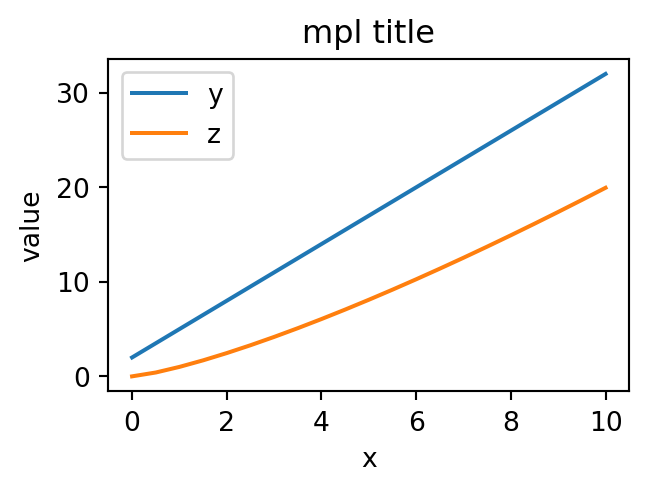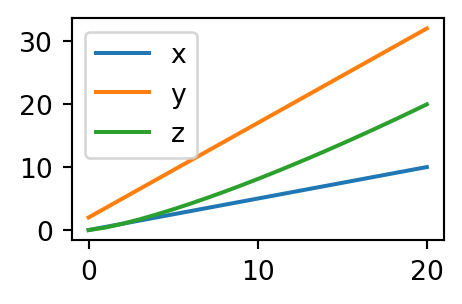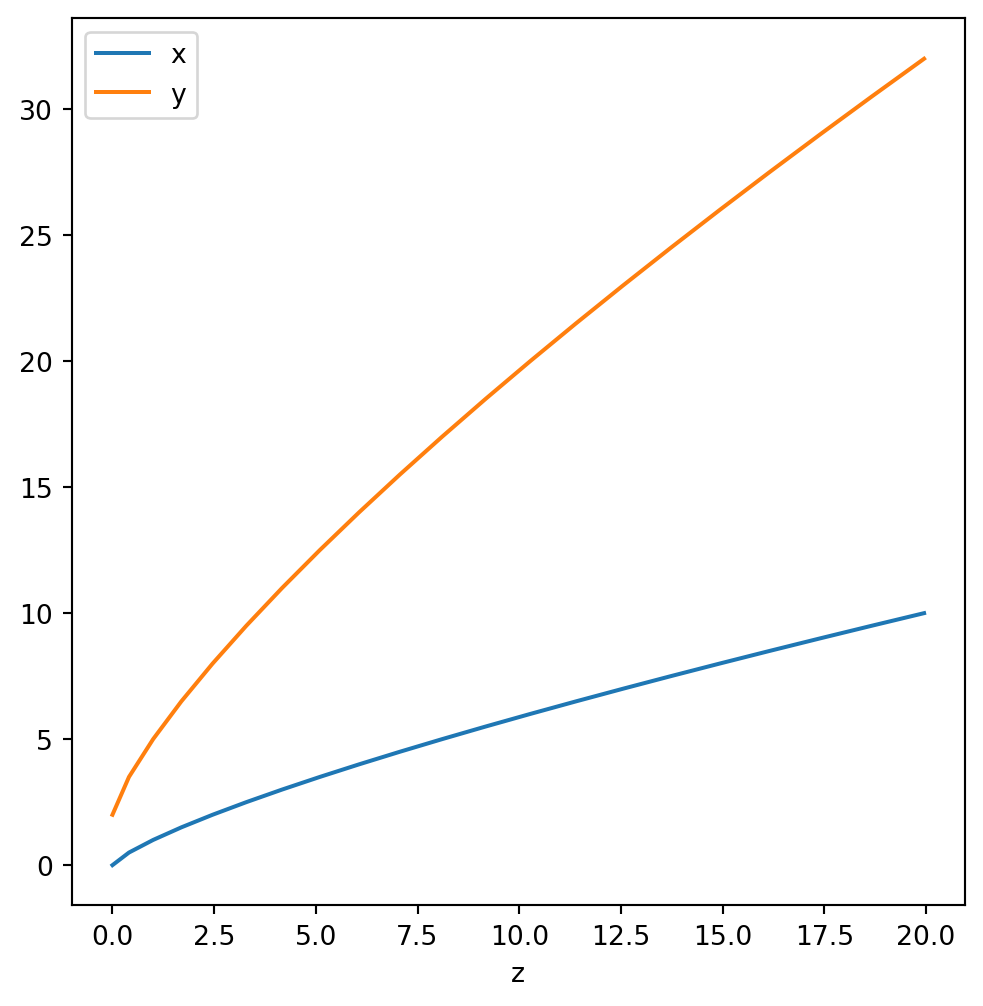```{python}
#| label: fig-line-plot
#| fig-cap: A line plot
import matplotlib.pyplot as plt
plt.plot([1, 23, 2, 4])
plt.show()
```Quarto YAML and Markdown: tips and tricks
1 YAML
1.1 This document’s header YAML
---
author: "Stephen J. Mildenhall"
categories:
- meta
- programming
- blog
- Python
date: 2024-02-14
date-modified: 2024-02-21
description: 'What I learned today by RTFD.'
draft: false
title: "Quarto YAML and Markdown: tips and tricks"
toc: true
toc-title: My TOC title
toc-depth: 2
toc-title: Post contents
number-sections: true
number-depth: 2
format:
html:
fig-width: 4
fig-height: 3
image: /static/img/banner-glasses-text-4.png
---1.2 Project YAML
project:
type: website
output-dir: docs
preview:
port: 7777
website:
title: "TestBlog"
description: "Thoughts and musings on all things Quarto"
search:
location: navbar
navbar:
background: secondary
left:
- about.qmd
- icon: github
href: https://github.com/mynl
- icon: rss
href: index.xml
favicon: static/icon/favicon.ico
site-url: "https://blog.mynl.com"
twitter-card: true
open-graph: true
format:
html:
theme: litera
css: styles.css
smooth-scroll: true
citations-hover: true
footnotes-hover: true
page-layout: full
execute:
cache: true # incremental: only recalc if any block changes
freeze: auto # re-render only when source changes (global)
daemon: 600 # stay alive for 600 seconds1.3 Index YAML
This YAML in ~/index.qmd forces the RSS feed construction.
---
listing:
contents: posts
sort: "date desc"
type: default
categories: true
sort-ui: false
filter-ui: false
feed:
categories: [programming, research]
---2 Basic Cross Referencing
An in-line footnote is ^[footnote text]. A deferred footnote is [^label] followed by [^label]: footnote text elsewhere in the document.
Code
@fig-ug is a map of the ug. And @fig-line-plot is a line plot.
@fig-balance is the balance and @fig-ug-2 is another underground.
A para of text^[with an inline footnote.]. Inline foot notes are `^[the footnote]`.
A para of text[^a] with a deferred footnote created `text[^a]` and `[a]: below.
@Mildenhall2022 is a fine book. @Pittarello2024 is an AAS work.
[^a]: Here is the actual footnote.Begets
Figure 4 is a map of the ug. And Figure 1 is a line plot. Figure 5 (b) is the balance and Figure 5 (a) is another underground.
A para of text1. Inline foot notes are ^[the footnote].
A para of text2 with a deferred footnote created text[^a] and `[a]: below.
Cross reference reserved prefixes are: fig, tbl, lst, tip, nte, wrn, imp, cau, thm, lem, cor, prp, cnj, def, exm, exr, sol, rem, eq, sec.
Thus
Here is @fig-ug and @Fig-ug. Customize with [my fig @fig-ug] or no prefix with [-@fig-ug].begets
Here is Figure 4 and Figure 4. Customize with my fig 4 or no prefix with 4.
2.1 Between doc links
You can link between docs with
[about](about.qmd)
[about](about.qmd#section)Note the qmd extension (works no matter what you render to!)
Seems not to generate auto refs.
Turn off numbering
Use {.unnumbered}.
3 TeX
3.1 Including Macros
Macros can be defined in a hidden block.
::: {.hidden}
$$
\def\RR{{\bf R}}
\def\bold#1{{\bf #1}}
\def\test{Hello, Macro!}
$$
:::
Then, use them:
* $\test$
* $\RR$
* $\bold x$ is a bold x
* Urcorner $x\!\!\urcorner$, $x\!\urcorner$, $x \urcorner$ and $b\!\!\urcorner$, $b\!\urcorner$, $b \urcorner$
* Hence an annuity $\ddot{a}_{x, n\!\urcorner}$begets
$$
$$
Then, use them:
- \(Hello, Macro!\)
- \({\bf R}\)
- \({\bf x}\) is a bold x
- Urcorner \(x \!\!\urcorner\), \(x \!\urcorner\), \(x \urcorner\) and and \(b\!\!\urcorner\), \(b\!\urcorner\), \(b \urcorner\)
- Hence an annuity \(\ddot{a}_{x, n\!\urcorner}\)
FWIW here is the old lcroof
\def\lcroof#1{
\hbox{\vtop{\vbox{%
\hrule\kern 1pt\hbox{%
$\scriptstyle #1$%
\kern 1pt}}\kern1pt}%
\vrule\kern1pt}}4 Callouts using `div
::: {.border}
This content can be styled with a border
:::This content can be styled with a border
More, the basic callouts:
:::{.callout-note}
Note that there are five types of callouts, including:
`note`, `tip`, `warning`, `caution`, and `important`.
:::Note that there are five types of callouts, including: note, tip, warning, caution, and important.
4.1 Line breaks
Starting each row with a pipe lets you write poetry.
freely, like this)
persevered
5 Tables
These are standard markdown pipe tables.
| Col1 | Col2 | Col3 |
|------|------|------|
| A | B | C |
| E | F | G |
| A | G | G |
: My Caption {#tbl-letters}begets
| Col1 | Col2 | Col3 |
|---|---|---|
| A | B | C |
| E | F | G |
| A | G | G |
See Table 1. The label must start with the lbl- prefix. Tables can be nested with divs.
::: {#tbl-panel layout-ncol=2}
| Col1 | Col2 | Col3 |
|------|------|------|
| A | B | C |
| E | F | G |
| A | G | G |
: First Table {#tbl-first}
| Col1 | Col2 | Col3 |
|------|------|------|
| A | B | C |
| E | F | G |
| A | G | G |
: Second Table {#tbl-second}
Main Caption
:::begets
| Col1 | Col2 | Col3 |
|---|---|---|
| A | B | C |
| E | F | G |
| A | G | G |
| Col1 | Col2 | Col3 |
|---|---|---|
| A | B | C |
| E | F | G |
| A | G | G |
See Table 2 for details, especially Table 2 (b).
6 Executable code blocks
The next code, created using double braces
```{python}
#| echo: fenced
#| label: fig-line-plot
#| fig-cap: "A line plot"
import matplotlib.pyplot as plt
plt.plot([1, 23, 2, 4])
plt.show()
```begets
The label is the cross reference, @fig-line-plot = Figure 1.
More options are available. The code
#| label: fig-plots
#| fig-cap: "Code and plots a and b"
#| fig-subcap:
#| - "Listing, suppress with echo: false"
#| - "Plot a heading"
#| - "Plot b heading"
#| layout-ncol: 3
#| lst-label: lst-code-block
#| lst-cap: make a test dataframe.
import matplotlib.pyplot as plt
plt.plot([1,23,2,4])
plt.show()
plt.plot([8,65,23,90])
plt.show()begets
The last two lines label the code block listing (hence lst), see #lst-code-block.
See Figure 2 for examples. In particular, Figure 2 (c).
6.1 DataFrame output
The preamble:
#| label: tbl-test
#| tbl-cap: Here is a test dataframe.
#| lst-label: lst-code-block
#| lst-cap: make a test dataframe.produces output like so. Notice the preamble is stripped from the output.
import pandas as pd
import numpy as np
# this comment remains
df = pd.DataFrame({'x': np.linspace(0,10,21)})
df['y'] = 2. + 3.* df.x
df['z'] = df.x ** 1.3
display(df.iloc[::4])| x | y | z | |
|---|---|---|---|
| 0 | 0.0 | 2.0 | 0.000000 |
| 4 | 2.0 | 8.0 | 2.462289 |
| 8 | 4.0 | 14.0 | 6.062866 |
| 12 | 6.0 | 20.0 | 10.270619 |
| 16 | 8.0 | 26.0 | 14.928528 |
| 20 | 10.0 | 32.0 | 19.952623 |
Using just df in the last line, rather than display achieves the same effect:
df.iloc[1::4]| x | y | z | |
|---|---|---|---|
| 1 | 0.5 | 3.5 | 0.406126 |
| 5 | 2.5 | 9.5 | 3.290956 |
| 9 | 4.5 | 15.5 | 7.066043 |
| 13 | 6.5 | 21.5 | 11.396916 |
| 17 | 8.5 | 27.5 | 16.152681 |
Listing 1 is a code block listing.
The same kernel runs all code blocks. Hidden code
#| label: tbl-test-3
#| tbl-cap: Here is some of a test dataframe.
#| echo: falsecase prints (rather than displays) the table:
x y z
0 0.0 2.0 0.000000
4 2.0 8.0 2.462289
8 4.0 14.0 6.062866
12 6.0 20.0 10.270619
16 8.0 26.0 14.928528
20 10.0 32.0 19.9526236.2 Multiple outputs
As we have already seen, we can make multicolumn output:
#| label: fig-test-3
#| fig-cap: Here is single caption dataframe.
#| fig-subcap:
#| - "lefthand plot"
#| - "righthand plot"
#| layout-ncol: 2begets
ax = df.set_index('x').plot(figsize=(3.5, 2.25))
ax.set(title='mpl title', ylabel='value')
df.plot(figsize=(2.5, 1.5))6.3 Custom Layout
We can make custom plot layouts:
#| layout: [[45,-10, 45], [100]]
df.set_index('x').plot(figsize=(2,2))
df.set_index('y').plot(figsize=(3,3))
df.set_index('z').plot(figsize=(6,6))interestingly rendered as
::: {#f5616b6c .cell layout='[[45,-10,45],[100]]' execution_count=8}
``` {.python .cell-code}
df.set_index('x').plot(figsize=(2,2))
df.set_index('y').plot(figsize=(3,3))
df.set_index('z').plot(figsize=(6,6))
```
::: {.cell-output .cell-output-display}
{width=196 height=208}
:::
::: {.cell-output .cell-output-display}
{width=269 height=282}
:::
::: {.cell-output .cell-output-display}
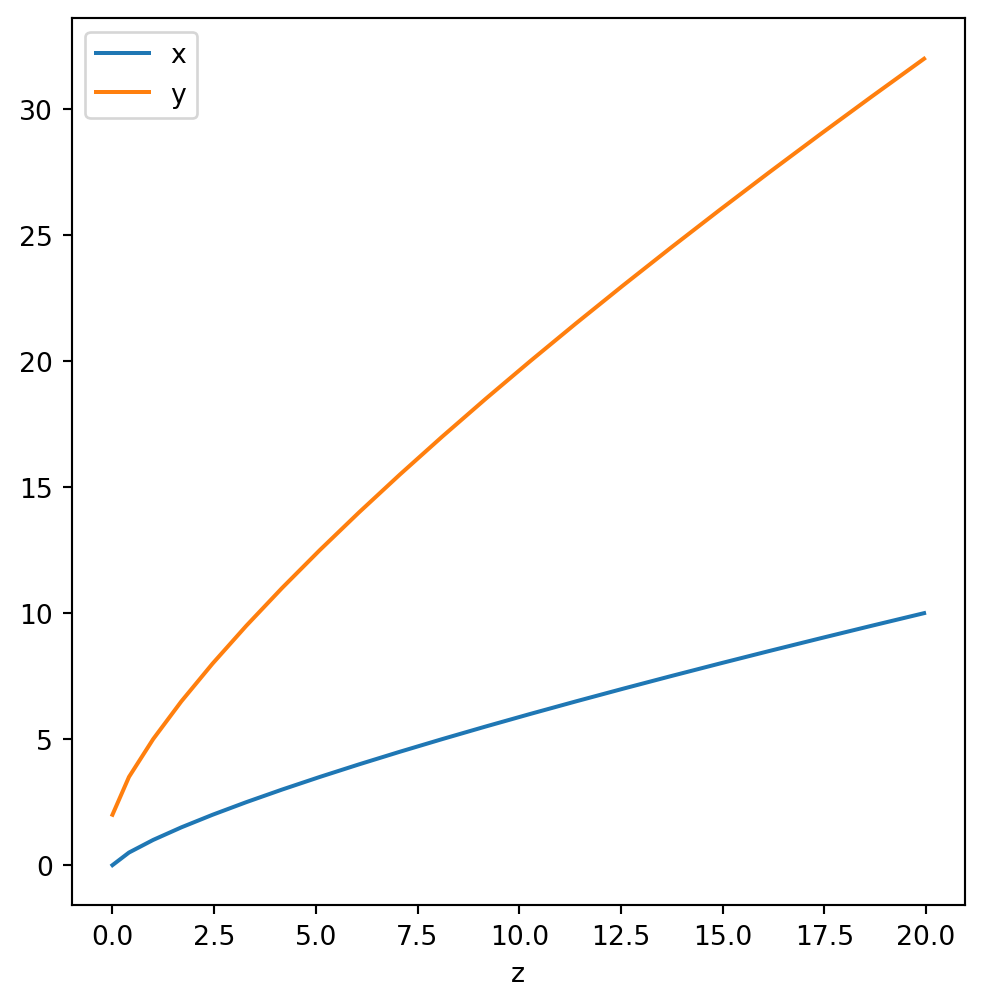{width=492 height=503}
:::
:::begets
df.set_index('x').plot(figsize=(2,2))
df.set_index('y').plot(figsize=(3,3))
df.set_index('z').plot(figsize=(6,6))6.4 Inline code
If radius is in the kernel, this can work, but not for ipynbs with a cache. It is OK for qmd files.
The radius of the circle is `{python} radius`
::: {#8204bb91 .cell execution_count=10}
``` {.python .cell-code}
radius = 23.678
```
:::
The radius of the circle is `{python} radius`.6.5 Four ticks
Can contain pretty much anything.
7 References
Put the references here and not at the end, use refs block:
::: {#refs}
:::8 Math environments
8.1 Theorems
::: {#thm-line}
### Line
The equation of any straight line, called a linear equation, can be written as:
$$
y = mx + b
$$
:::begets
Theorem 1 (Line) The equation of any straight line, called a linear equation, can be written as:
\[ y = mx + b \]
See Theorem 1.
::: {.proof}
By induction.
:::Proof. By induction.
Also thm, lem, cor, prp, def, exm, exr, sol, rem
8.2 Equations
Numbering uses
$$
stuff
$$ {#eq-...}Black-Scholes (Equation 1) is a mathematical model that seeks to explain the behavior of financial derivatives, most commonly options:
\[ \frac{\partial \mathrm C}{ \partial \mathrm t } + \frac{1}{2}\sigma^{2} \mathrm S^{2} \frac{\partial^{2} \mathrm C}{\partial \mathrm C^2} + \mathrm r \mathrm S \frac{\partial \mathrm C}{\partial \mathrm S}\ = \mathrm r \mathrm C \tag{1}\]
Equation 1 is defined in Section 8.2. Needs number-sections: true to work.
9 Inserting Graphics
9.1 Basic graphic
A figure, width 50% and right aligned:
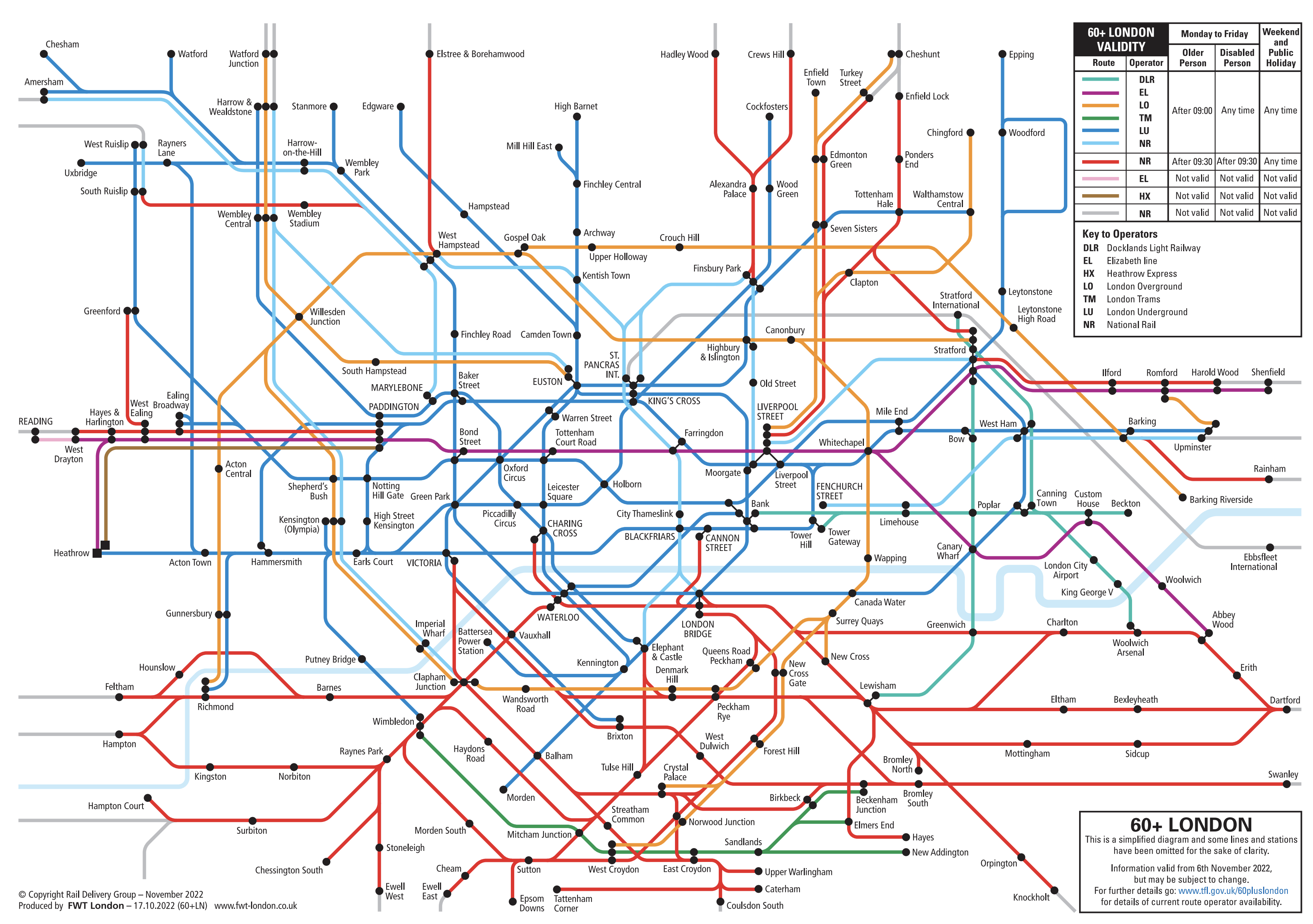{fig-align='right'
width=50% #fig-ug}9.2 Side-by-side graphics
Multicolumn output can be arranged with a div. The code
::: {#fig-two-figs layout-ncol=2}
{#fig-ug-2}
{#fig-balance}
Two graphics
:::begets two side-by-side graphics.
10 Customizations
Options like add ins. BTW you can do this https://quarto.org/docs/authoring/cross-reference-options.html to make a link of the link.
11 Execution
11.1 Caching
Caching at the project level with execute: cache: true. If any of the cells in the notebook change then all of the cells will be re-executed. Note that changes within a document that aren’t within code cells (e.g. markdown narrative) do not invalidate the document cache. This makes caching a very convenient option when you are working exclusively on the prose part of a document. Requires the jupyter-cache package (install with pip).
# use a cache (even if not enabled in options)
quarto render example.qmd --cache
# don't use a cache (even if enabled in options)
quarto render example.qmd --no-cache
# use a cache and force a refresh
quarto render example.qmd --cache-refresh11.2 Freezing
You can use the freeze option to denote that computational documents should never be re-rendered during a global project render, or alternatively only be re-rendered when their source file changes:
execute:
freeze: true # never re-render during project render
execute:
freeze: auto # re-render only when source changesNote that freeze controls whether execution occurs during global project renders. If you do an incremental render of either a single document or a project sub-directory then code is always executed.
11.3 Daemons
To mitigate the start-up time for the Jupyter kernel Quarto keeps a daemon with a running Jupyter kernel alive for each document. This enables subsequent renders to proceed immediately without having to wait for kernel start-up.
execute:
daemon: 600 # stay alive for 600 seconds
daemon: true12 Bootstrap classes
Use divs to get to bootstrap:
::: {.grid}
::: {.g-col-4}
This column takes 1/3 of the page
:::
::: {.g-col-8}
This column takes 2/3 of the page
:::
:::begets
This column takes 1/3 of the page
This column takes 2/3 of the page
